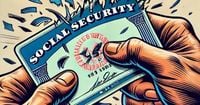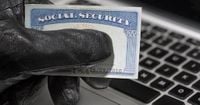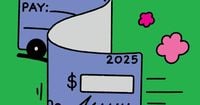In a significant shift towards digital modernization, President Trump has signed an executive order that will end the issuance of paper checks for tax refunds, Social Security payments, and other government benefits. The order, signed on March 25, 2025, mandates that all federal payments be made electronically by September 30, 2025. This move is expected to affect hundreds of thousands of Americans who currently rely on paper checks for their government benefits.
According to a White House spokeswoman, Liz Huston, the executive order aims to "defend against financial fraud and improper payments, increase efficiency, reduce costs, and enhance the security of federal payments." The administration's decision comes as part of a broader effort to modernize how the government handles financial transactions, moving away from outdated paper-based systems.
Statistics reveal that the use of paper checks has been declining for years. Currently, more than 99 percent of the approximately 69 million monthly Social Security payments are made through direct deposit. However, about 486,000 paper Social Security checks are still issued monthly, along with another 238,000 paper checks sent to recipients of Supplemental Security Income, which assists low-income individuals who are blind or disabled.
The shift to electronic payments is not without its challenges. Jennifer Tescher, chief executive of the Financial Health Network, emphasized the importance of consumer awareness and support in making this transition successful. She stated, "It’s all in the execution," highlighting that while the move is necessary, the government must ensure that all recipients are adequately informed and assisted in the transition.
Kathleen Romig, director of Social Security and disability policy at the Center on Budget and Policy Priorities, noted that while direct deposit is a "best practice" for secure payments, newly announced verification requirements for creating online Social Security accounts could pose difficulties for some individuals. This could necessitate additional support from government agencies, which are already facing significant staff reductions under the Trump administration.
Despite the benefits of electronic payments, concerns remain about those who do not have access to banking services. The executive order does mention that "limited exceptions" will be made for individuals without banking or electronic payment access. Lauren Saunders, associate director of the National Consumer Law Center, expressed the need to see how these exceptions will be implemented.
In recent years, the percentage of unbanked Americans has decreased, with just over 4 percent of households lacking access to a traditional checking or savings account in 2023, down from about 8 percent in 2011, according to the Federal Deposit Insurance Corporation. Programs like Bank On have contributed to this decline by helping individuals find low-fee bank accounts.
For those without bank accounts, the Direct Express program offers an alternative. This program allows recipients of Social Security, disability, or veterans benefits to receive their payments on a prepaid debit card, which can be used to withdraw cash or pay bills. Approximately 3.4 million people currently utilize this service, although the program's administrator has faced scrutiny for poor customer service.
The order also stipulates that all payments made to the government, including income taxes and passport applications, must be processed electronically rather than through physical checks. This comprehensive shift reflects the administration's commitment to reducing inefficiencies and enhancing the security of government transactions.
While the majority of federal income tax refunds are already issued via direct deposit, the IRS reported that as of March 21, 2025, about 55.7 million refunds for the 2024 tax year had been issued, with only 1.9 million, or about 3.5 percent, being paper checks. The IRS has indicated that the president's order will not affect refunds for the current tax season, which is nearing its April 15 deadline.
As the government prepares for this transition, it faces the dual challenge of modernizing payment methods while ensuring that vulnerable populations are not left behind. The administration's push to eliminate paper checks is part of a broader trend towards digitalization, reflecting changing consumer preferences and the need for increased security in financial transactions.
However, the success of this initiative will largely depend on the government's ability to effectively communicate the changes and provide necessary support to those who may struggle with the shift to electronic payments. As the September deadline approaches, stakeholders from various sectors will be watching closely to see how this transition unfolds and what impact it will have on the millions of Americans who rely on government benefits.
In summary, President Trump's executive order to phase out paper checks marks a pivotal moment in the evolution of federal payment systems. As the government moves towards a more efficient and secure electronic payment model, it is crucial that all citizens, especially those most affected by this change, receive the guidance and assistance they need to adapt.






